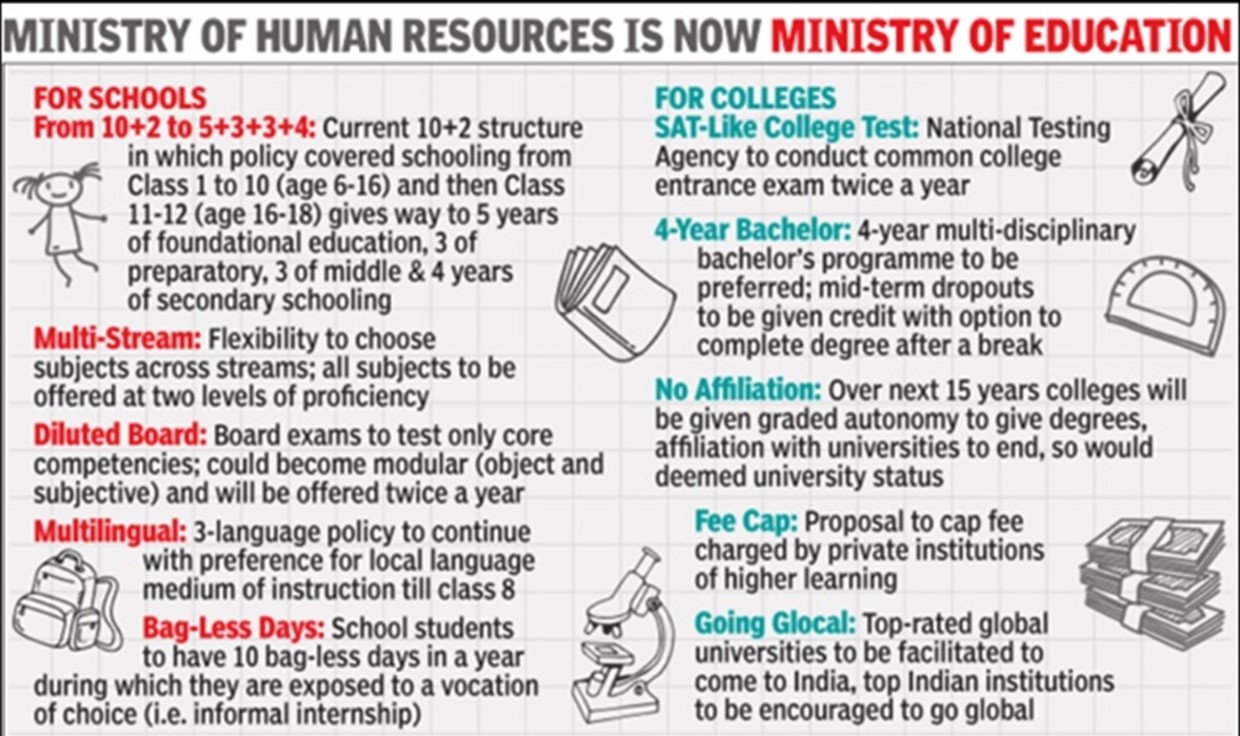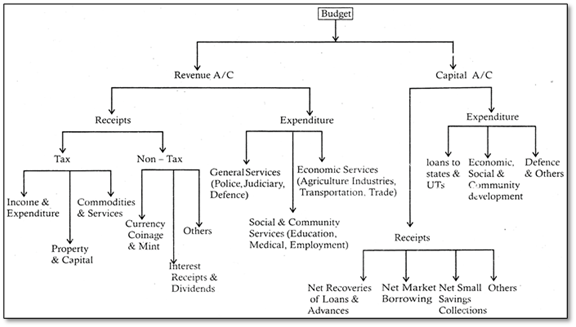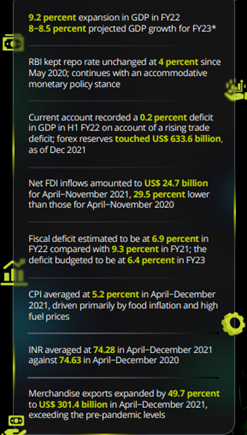Tuesday, 8th February 2022
CAR-T Cell Therapy
In News
A patient of leukaemia has been cured of the disease, recently, after receiving CAR-T cell therapy ten years ago in the US.
About the News
- Doug Olson, 75, of California, received CAR-T cell therapy in 2010.
- The treatment helps convert T-cells, which are the base of a body’s immune system, into cancer-fighting cells.
- Over time, researchers said, the modified T-cells evolved with many turning into 'helper' cells that work with the cancer-killing cells. Helper cells eventually became dominant in the patient.
- The altered cells have been described as 'living drugs' and CAR-T cell therapy is starting to be widely adopted around the world to fight blood-based cancers.
About CAR T-cell therapy
- Chimeric antigen receptor (CAR) T-cell therapy is a way to get immune cells called T cells to fight cancer by changing them in the lab so they can find and destroy cancer cells.
- Like all other immune responses, T cells have their own proteins called receptors that attach to foreign antigens and help trigger other parts of the immune system to destroy the foreign substance. By CAR, T cells are altered to have receptors for cancer cells.
- CAR T-cell therapy is also sometimes talked about as a type of cell-based gene therapy, because it involves altering the genes inside T cells to help them attack the cancer.
- Since different cancers have different antigens, each CAR is made for a specific cancer's antigen.
Probable side effects
CAR T-cell therapy can be very effective against some types of hard-to-treat cancers, but it can also sometimes cause serious or even life-threatening side effects.
- Cytokine release syndrome (CRS): As CAR T cells multiply, they can release large amounts of chemicals called cytokines into the blood, which can ramp up the immune system causing acute systemic inflammatory syndrome characterized by fever and multiple organ dysfunction.
- Nervous system problems: This treatment can sometimes have serious effects on the nervous system.
- Other serious side effects: It may also lead to allergic reactions during the infusion abnormal levels of minerals in the blood, weakened immune system etc.

Sources:
Accreditation policy for press
In News
Government has announced a new accreditation policy for press.
About the News
- Ministry of Information and Broadcasting has released a new accreditation policy laying down stringent conditions to let a journalist function in the country.
- Journalists working with newspapers, news agencies, foreign publications, TV channels, etc. are also eligible for accreditation, based on the size of each platform.
- Press Information Bureau (PIB) wing of the ministry has announced that under the new policy, journalists working with online platforms will be eligible for accreditation.
- The government policy is seen as a step to put curbs on freedom of press and journalism in India.
What are the important features of new accreditation policy?
- Loss of PIB status: A journalist can lose government accreditation if he or she “acts in manner which is prejudicial to the sovereignty and integrity of India, the security of the state, friendly relations with foreign states, public order, decency or morality or in relation to contempt of court, defamation or incitement of an offence”. Such a criteria was not mentioned in the last policy issued in 2013.
- New entrants: Under the new policy, journalists working with online platforms will be eligible for accreditation. However, news aggregators will not be considered.
- Suspension of accreditation: Under new policy, a journalist will be suspended under conditions including- charge of “serious cognisable offence”, use of accreditation for “non-journalistic activities”, furnish of false information, for being part of organisation which ceases to exist, or the journalist has left the organisation, among others.
- Prohibition: The policy prohibits a journalist from mentioning “accredited to the Government of India” on social media, visiting cards or letterheads etc.
- Eligibility for online platforms: The policy states that the online platform must have existed for over a year, and needs to report the website’s “average monthly unique visitor count of last six months duly certified by the website’s CAG-approved/ empanelled auditors”. A website with 10 to 50 lakh unique visitors per month can get one journalist accredited, while one with over 1 crore unique visitors per month can get four journalists accredited.
- Eligibility for distinguished journalists: There are 2457 PIB accredited journalists at the moment. Apart from journalists working with the organisations mentioned, freelancers with over 15 years of experience, and veteran journalists with over 30 years of experience, over 65 years old, with a “publicly acclaimed distinguished career” are also eligible.
What are the advantages of accreditation status?
- Access: Accreditation allows journalists to access government offices in Delhi, and only a PIB accredited journalist is allowed entry to certain events in which the President or the Prime Minister are present.
- Health benefits: Journalists accredited with the PIB are eligible, along with members of their family, for subsidised health services under the Central Government Health Scheme, meant for employees of the Union government.
- Fiduciary protection: a PIB accreditation helps a journalist carry out her professional responsibilities. It does so by helping a journalist protect her sources. Since a PIB card comes after security clearance from the Home Ministry, accredited journalists are allowed to enter the premises of most Union government ministries without prior appointment.
- Anonymity: They are not required to register or record their presence at the reception, or with any other official in any ministry. This firewalls the journalists from attempts at finding out when and on how many occasions they have visited the premises of an office, and which officers they have met.
Sources:
Open Cast mining
In News
A recent caving in of an open cast coal mine in Dhanbad district of Jharkhand has cost lives of five people.
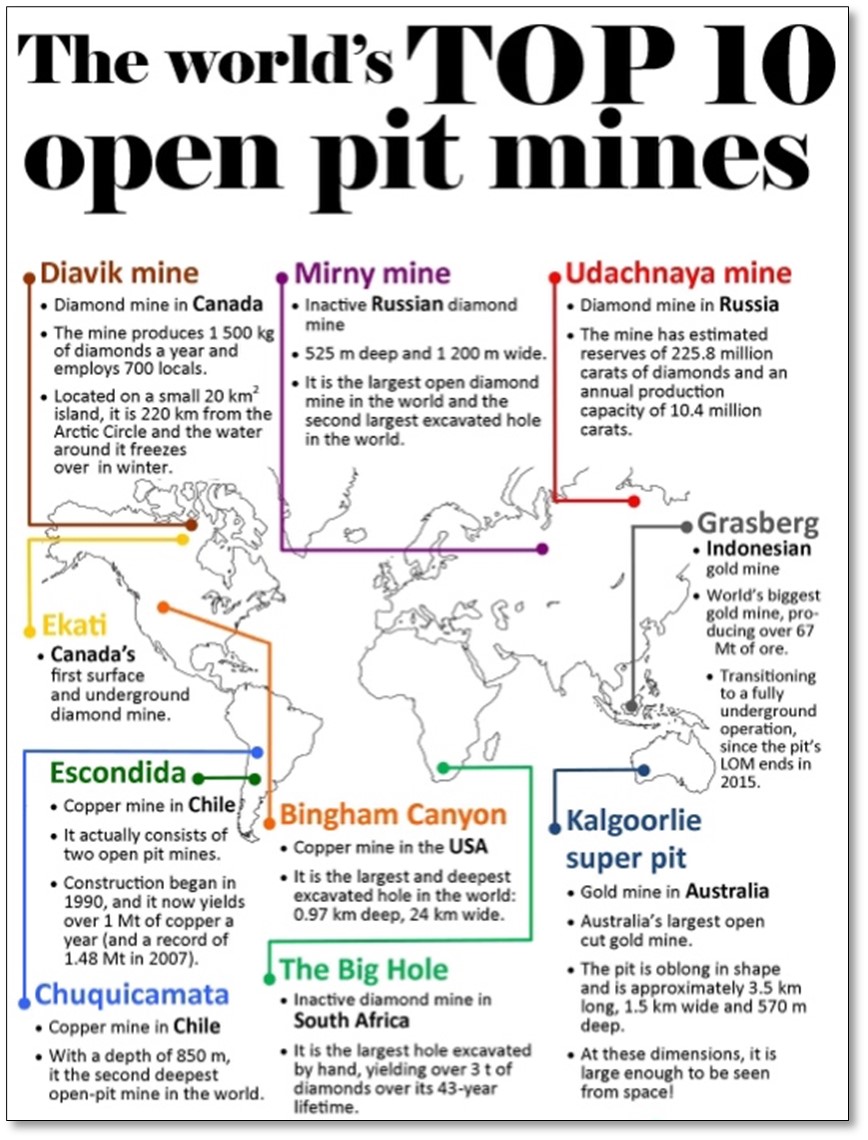
About the News
- It is reported that some persons from the nearby villages of Dhanbad had gone to the ‘prohibited area’ under Eastern Coalfields Limited (ECL) in Mugma, where a part of the overburdened area of the mine had caved in.
- Dhanbad has 105 mining leases altogether comprising underground, open cast and exhausted mining areas and some leases are not operational because of lack of statutory clearances.
- This incident has once again opened up a debate on improving the security at mines so that local people don’t risk their lives for few sacks of free coal.

Current state of security in open cast mines to prevent illegal entry
- Security is the ‘primary’ responsibility of the lease holder in this case ECL which has been given Central Industrial Security Force (CISF) personnel to patrol the area and keep trespassers out.
- However, local law for trespassers has not been stringent. This has allowed people to come in groups to the mining areas to collect coal.
- In order to address this, a mine safety audit has to be initiated.
Reasons for Open-cast mining in States
- Poverty: In order to sustain their livelihood, the poor, risk their lives for a few sack of free coal.
- Security lapse: As mentioned earlier, trespassing is common in certain areas as open cast mining is not a well-guarded perimeter.
- No Proper demarcation of Authority: There is lack of or less coordination between the District authority and the CISF due to overlapping of jurisdiction of laws and regulations.
- Nexus: Dhanbad-in this case is known for illegal quarrying of coal from the abandoned land that has been going on for many years in complicity with coal mafias, police and politicians.
Source:
- Explained: Why open cast mines in Jharkhand continue to be death trap
- Sub-sectoral Environmental and Social Guidelines: Mining Open Cast
Picture source:
First Railway Workshop of India
On February 8, 1862 the first railway workshop of India was established in Jamalpur, Bihar. As there was not much industrial development outside, the Workshop established its own Iron and Steel Foundry, becoming quite self sustaining. The Jamalpur Workshop is also said to have commissioned the first Rolling Mill in Asia. The Line Shaft System was used to power Turning Machines, and a Steam Powerhouse at Jamalpur generated electricity for the Workshop. The foundry catered to the need for Iron Castings or Cast Iron castings. Later, the Workshop became a major producer of Cast Iron Brake Blocks for the Indian Railways, until gradually, Cast Iron Brake Blocks were replaced by those made of Composite Materials. Still preserved in good condition, the Steel Rolling Mill at the Jamalpur Railway Workshop is said to be the first in Asia. A special train, colloquially known as the 'Cooliee Gaddi' was run to take workmen to and from the Jamalpur Workshop.
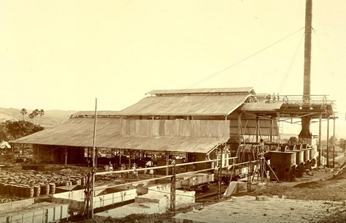
Source:
High Frequency Data for Policy Making
In News
The Economic Survey 2021-22 reflects that the government made use of data, often real-time data, in public policy responses in the country.
About the News
- Over the last two years, the government leveraged a host of High Frequency Indicators (HFIs) both from government departments/agencies as well as private institutions that enabled constant monitoring and iterative adaptations.
- Using 80 real-time high-frequency indicators such as goods and services tax collections, power consumption, digital payments, satellite photographs, cargo movements and highway toll collections, for instance, the Survey offers a new approach to policymaking.
- From the all-knowing ‘waterfall’ framework that assumed planners knew it all, to an ‘agile’ approach that uses feedback loops and adjusts for quicker changes in data, the Survey argues for a new path to policymaking.
- Facing a never-seen-before uncertainty, the government opted for a ‘Barbell Strategy’ that combined a bouquet of safety-nets to cushion the impact on vulnerable sections of society/business, with a flexible policy response based on a Bayesian updating of information.
What is High Frequency Data (HFI)?
- High-frequency data is data that is collected at a higher frequency, or more often, than traditional datasets.
- Technically, high-frequency data is about higher frequencies than daily, often hourly if not by the second. This is dependent on the type of data we’re talking about – some data is not relevant at such granularity, while other data increases its usefulness exponentially when analysed on a real-time basis.
- COVID-19 made high-frequency data a go-to economic indicator.
- HFI reflects the contours and implications of the “Social Science Data Revolution” characterized by the transition from the production and availability of a relatively small volume of analog data collected through surveys and official channels to those of massive amounts of digital data flowing from various streams.
Need for HFI in Policy Making
- Policymakers need timely and relevant information on the impacts of the crisis as well as the effectiveness of their policy measures to save lives and support livelihoods.
- The COVID-19 pandemic posed unique challenges to policymakers across the globe, necessitating efficient action in short timeframes. During such crises, having the right data at the right time is crucial to making informed policy decisions.
- Traditional economic indicators can be inadequate owing to issues of timeliness, granularity, and difficulty in collection. HFIs could help assess the economic impact triggered by COVID-19, shape new economic policies, and understand the road to recovery.
- Due to the current disruption in economic activity, routine data collection and growth forecasting has become difficult, including for indicators like inflation and the Consumer Price Index (CPI). Thus, there is need for institutionalising alternative methods for data collection.
- Traditional economic indicators like GDP and inflation rate are not frequently updated given the complexity in collecting and computing them. While they do provide a fair picture of the state of the economy, they do not necessarily help gauge the near-term impact of an economic policy decision.
- The traditional macroeconomic indicators might not always be able to provide geographically granular data, limiting their ability to provide insights at the level of cities and districts.
How does HFI help in Policy Making?
- The potential of this data is increasingly being tapped in everything from healthcare to urban transport streamlining. The national government think tank, NITI Aayog, is working to create a National Data and Analytics platform. And data use lies at the heart of new endeavours from citizen identification to health and land record upkeep.
- The Economic Survey argues that it is because of the wealth of real-time data that the country’s economic policymakers had access to that it could break away from nebulous forecasts to actually measuring impact and responding immediately literally fortnight to fortnight during the pandemic.
- The Agile approach undertaken by the government, as per the Economic Survey, reflects the effective use of HFIs, wherein cash and other benefits/subsidies were inserted and targeted at areas and groups which were most vulnerable, constantly accepting and responding to feedback from the ground, and thus changing tracks frequently as per need.
- HFIs will enable people in a democracy to alter policy making. Data-driven feedback loops are likely to be the biggest change in public policy making in the years to come as empowered citizens realise that they are generators of data, and their feedback matters more than ever.
- High-frequency data on the labour market bridges a critical gap in the Indian statistical framework. It would enable timely monitoring of the labour market, which is essential for devising policies for employment creation and skill development in the country.
- Such a survey would also give insights on the relative contribution of different sectors in employment generation over time.
- Realising the need for real-time health and disease data, various countries have launched their contact-tracing apps to track potential cases of infection based on the location of the user. Eg. Aarogya Setu. Such data on health indicators is not only helping trace individuals at risk but also to plan the delivery of health resources.
- To fill the current gaps, higher-frequency and more granular economic data could help decision-makers obtain a more real-time, localised understanding of the problems to target policy measures and resources and conduct a course correction more efficiently.
- Today, in a dynamic environment, data driven policy-making is considered both practical and desirable. This is all the more important because of significant lags in official data releases of key macro variables such as GDP.
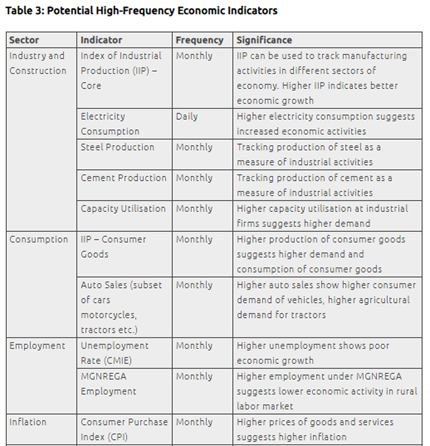
Challenges related to HFIs
- While alternative indicators can provide a snapshot of economic activities at a higher frequency, they are not reliable by themselves. They need to be viewed as complementary to the existing/traditional indicators which are benchmarked, multidimensional, and constructed with economic, mathematical and statistical expertise.
- Given the limitations of data availability, several of these indicators are only representative of the geographies/cities they are generated from and cannot be taken as a proxy for national indicators of economic activity.
- Real -time indicators such as manufacturing activity, interest rates and consumer inflation rates have low predictive power as they change almost at the same time as the changes they signal occur (i.e., they are “coincident” to economic activity).
- There is need to find a balance between the unprecedented increases in data production and availability about individuals and the privacy rights of human beings. Adequately anomymized data, deliberate participation and strong privacy-preserving technical systems and legal standards can be used.
Way Forward
- For alternative indicators, the appropriate indicators need to be selected from a pool of potential indicators for each facet of the economy and they need to be benchmarked with the traditional indicators. Comparing them with the public statistics can help understand their biases and construct aggregates that are more representative of overall economic activity.
- Thus, while working with alternative indicators, it is important to have clear definitions, to check them for their robustness, indicate the representativeness of the indicator, and clearly state their limitations.
- Given the complex data-gathering and computation processes, there are several issues with traditional indicators such as GDP. To account for the lack, lag and a growing distrust in government statistics, these traditional indicators must be complemented with alternatives to get real-time data on the economic health of the nation.
- To improve and make these alternative indicators more reliable, the concerned government agencies, along with relevant private sector entities, must work on their limitations and develop more sturdy, representative and benchmarked proxy indicators, while simultaneously pushing for more robust, more frequent, and more localised traditional indicators.
Conclusion: A core concern in policy-making is identifying the signs of expansions and contractions in economic activity. At any point in time, diverse economic activity indicators may indicate mixed trends. Therefore, combining all of these together in an appropriate way to arrive at the underlying (or unobserved) trend has traditionally occupied the attention of both governments and businesses.
When data changes, so does opinion; when data sources change and data streams become faster and real-time, the edifice of holding opinions should change too. This, the Survey argues with elegance.
Question: Discuss the importance of High Frequency Indicators in effective Policy making.
Sources:
- The Economic Survey 2022's biggest message: Data is King:
- India needs high-frequency data for jobs policy, labour ministry’s new survey a good step:
- Fast Data for Faster Decision-making: The Utility of High-frequency Economic Indicators:
- High Frequency Data for investors and policymakers:
- Economic Survey 2021-22: New data through new tools for new policymaking:
- Why High-Frequency Analysis is the Future of Economic Forecasting:
- Next-generation nowcasting to improve decision making in a crisis:
- Nowcasting Indian GDP growth using a Dynamic Factor Model:
Vietnam's 'incense village’
This is image of dried incense sticks in a courtyard ahead of Lunar New Year celebrations in Quang Phu Cau village outside Hanoi, Vietnam. These incense sticks are left to dry in the sun before being distributed across Vietnam and to other parts of the world. In Vietnam’s ‘incense village’, dozens are hard at work dying, drying and whittling down bamboo bark to make the fragrant sticks ahead of the busy lunar new year holiday. It is the most frantic time of year for workers in the cottage industry in Quang Phu Cau village on the outskirts of Hanoi, where families have been making incense for more than a century – a great source of pride for many. Some hack bamboo planks down to be fed into a whittling machine; others dip the thin strips into buckets of pink dye, leaving hundreds of brightly coloured bushels fanned out like bouquets on the streets to air out.
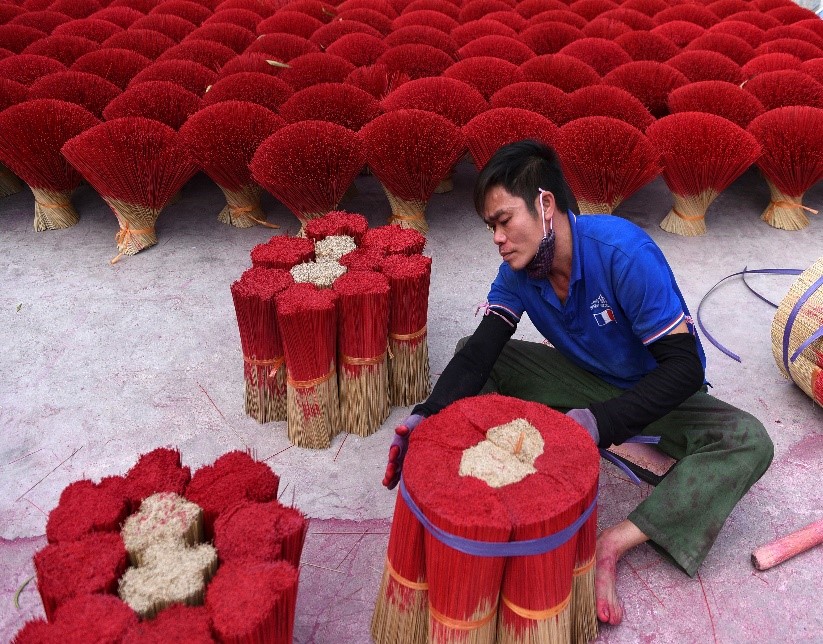
Sources:
Pandit Bhimsen Joshi
- Context: February 4 marked the centenary birth anniversary of music legend and Bharat Ratna Pandit Bhimsen Joshi (1922- 2022).
- Born in 1922 at Ron in what is today Gadag district, Bhimsen Joshi was the eldest among 16 children born to Gururaj Joshi and Godavaribai. He left home at a young age in pursuit of music and a suitable guru.
- Bhimsen took his initial musical training from Agasara Channappa, who was trained by veteran singer Inayat Khan. Channappa taught him Raga Bhairavi and Bhimpalasi.
- In 1936, the eminent Khyal singer Sawai Gandharva (Pandit Rambhan Kundgolkar) agreed to train Bhimsen. Sawai Gandharva introduced Bhimsen to the Kirana gharana and he went on to become one of its most famous proponents.
- The singer played the lead role and also composed the music. The small-town boy went on to become a legendary vocalist and a Bharat Ratna.
- Pandit Bhimsen Joshi, the legendary exponent of Hindustani classical music, enthralled innumerable Indians with his music over seven decades.
- He was conferred with the India’s highest civilian honour, the prestigious Bharat Ratna, in 2008 — he was the first Hindustani classical vocalist to be chosen for the award.
- Younger readers may remember him as the singer of ‘Mile Sur Mera Tumhara’, but Bhimsen was one of India’s leading Khyal vocalists. He also created a unique vocal idiom of his own, excelling in different styles like gamakar, meend and tanakriya.
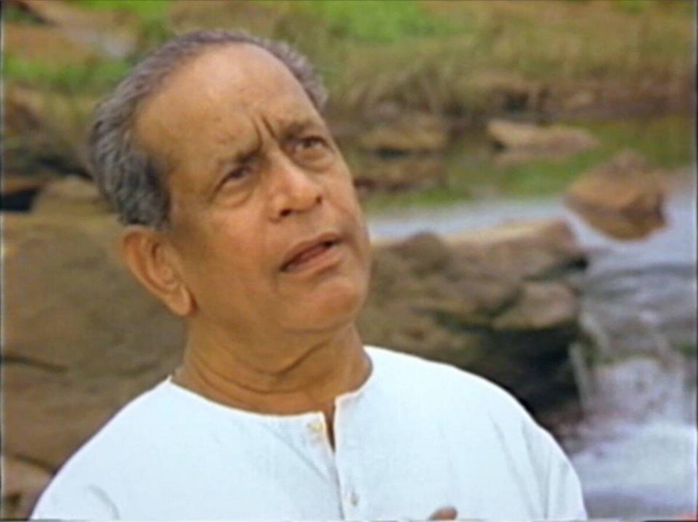
Sources:
mWRAPR
- Context: Azooka Labs, a startup at the Indian Institute of Science (IISc.), has launched mWRAPR.
- mWRAPR is a biological transport and storage medium for genomic sequencing labs, biobanks, and research labs handling biological samples for molecular analysis.
- It would help in preserving genetic content in all types of biological samples, including microbiomes, saliva, cells, tissues, blood, body fluids, and fecal tubes.
- It is the only Molecular Transport Medium to be manufactured in India that competes with sample stabilisation and transporting media, such as Paxgene from Qiagen and others.
- The sample collection kits out currently are not molecular grade. They generally tend to be cheap nutrient based media with significant potential for contamination.

Source:
2 New Ramsar sites
- Context: The Khijadiya Bird Sanctuary in Gujarat and Bakhira Wildlife Sanctuary in Uttar Pradesh have been listed as Wetlands of International Importance by the Ramsar Convention.
- Ramsar Convention is an international treaty for the conservation and sustainable use of wetlands.
- Khijadiya, a freshwater wetland near the coast of the Gulf of Kutch, is part of the Central Asian Flyway and has become the fourth wetland of Gujarat to get the Ramsar tag (the other three being Nalsarovar Bird Sanctuary, Thol Wildlife Sanctuary and Wadhwana wetland).
- The sanctuary is now part of Marine National Park, Jamnagar, the first marine national park in the country.
- Bakhira Wildlife Sanctuary, is a freshwater marsh in the Sant Kabir Nagar district, and is the largest natural floodplain wetland of eastern Uttar Pradesh.
- It provides a wintering ground for over 25 species that migrate on the Central Asian Flyway.
- The Sanctuary was established in 1980 and is protected under the Wildlife Protection Act (1972).
- With this, the total number of Ramsar sites in India goes up to 48.
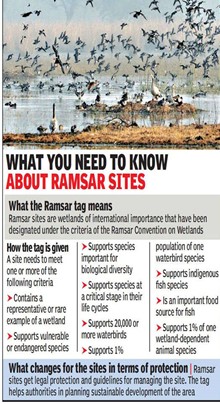
Source:
Image source:
'World Breakthrough of the Year' award
- Context: India's Olympic gold medal-winning javelin thrower Neeraj Chopra has been nominated for the prestigious Laureus 'World Breakthrough of the Year' award.
- The Laureus World Sports Award for Breakthrough of the Year is an annual award honouring the achievements of those individuals or teams who have made a breakthrough performance in the world of sports.
- It was first awarded in 2000.
- The awards are presented by the Laureus Sport for Good Foundation, a global organisation involved in charity projects supporting 500,000 young people.
- The awards are considered highly prestigious and are frequently referred to as the sporting equivalent of “Oscars".

Source:
- Neeraj Chopra for prestigious Laureus 'World Breakthrough of the Year' award
- Neeraj Chopra nominated for Laureus World Breakthrough of the Year Award
Image source:
In Perspective | The only answer to India vs Big Tech on moderation:HT
Essence: The article talks about the balance that is needed to be maintained between exploitation caused by information outlay on social media with freedom of speech. The problem got recently highlighted when Indian government had a heated argument with big technology companies like Google, Facebook etc. Indian government asked the companies to takedown the content, on the account of it being anti India and threat to security and sovereignty of the country.
The problem stems from two areas out of which the major one is failure of policies and systems put in place by social media companies to check these. However, shortcoming on part of the companies do not make government automatically right. There have been rules in place which leads to excessive concentration of power in the hands of government and thereby restricting freedom of speech. Such steps by the government could also prove detrimental for India’s foreign relation especially with the USA. There is a need to follow a balanced approach where the effort should come from both the sides of table. The government could start with making takedown orders more detailed and for companies they can start with upholding the Santa Clara principles.
Why you should read this article?
- To understand the recent tussle going between the government and the social media giants.
- To understand what could be done to strike a right balance between both.
Source:
Guiding peri-urban transformation: ORF
Essence: PUAs (peri-urban areas) are locations on the outskirts of cities. Different types of settlement formations, such as hamlets, villages, urban villages, slums, unauthorised colonies, and census towns, can be found throughout India's PUAs. With in-migration of population, the rural qualities of many PUAs adjacent to large cities are changing through exchange of knowledge and idea, new sources of income. A number of negative consequences might also be seen like indiscriminate land use conversion; uncontrolled development; emergence of informal/unplanned buildings in PUAs resulting in lower quality of life; the drainage issue; safety of women, etc.
At several levels, the government has attempted to solve the difficulties of PUAs. The demand on PUAs will continue to rise as India's population grows and urban land becomes scarce. Many PUAs have social, economic, and environmental problems, which are a result of flaws in legislation, planning, and governance. As a result, efforts must be taken to preserve PUAs' traditional nature while also guiding future growth in a planned manner.
Why should you read this article?
- To understand the significance of PUAs and the various types of PUA settlements present throughout India.
- To comprehend how many PUAs' rural traits are altering, as well as the pros and drawbacks that this has.
- To learn what steps could be made to remedy this problem.
Source:
India and the Great Power Rivalry: IE
Essence: The editorial highlights dynamic and frequent developments in Eurasian geopolitics of the recent times. On one hand, China and Russia have proclaimed that “friendship between the two States has no limits” and there are no forbidden areas of cooperation between them. On the other side, USA has realigned its allies in NATO and European powers- UK, France and Germany working towards dispelling the Ukraine crisis but with tilt towards USA. It might seem as a mistake to think USA has retreated from Afghanistan and can’t afford 2 front war as USA posses military might and allies at both regions to overpower the enemy. Through alliances like AUKUS, QUAD and NATO, USA has reinvigorated and enhanced its partnerships with regional allies. It reflects in the top 10 world economies, 7 of which are USA’s allies. Through crisis at Ukraine, EU politics and USA internal politics might have solidified against Russia and China.
Seeing the example of Germany, which is being forced to take a pro-allies stand in the Ukraine crisis, India might be walking a tight rope. Getting further marginalized in this crisis, India might eventually incline itself to the growing powers and allies of USA and EU.
Why you should read this article?
- To understand the present levels of international engagements with regard to Ukraine crisis.
- To know the course of action for India foreseeing Germany’s role between USA and Russia.
Source:
Messiah of Leprosy Patient
Background
- Leprosy patients are often treated as untouchables and are excluded from the society.
- Jaya Reddy from Delhi is working towards uplifting the condition of the leprosy patients since last two-decades.
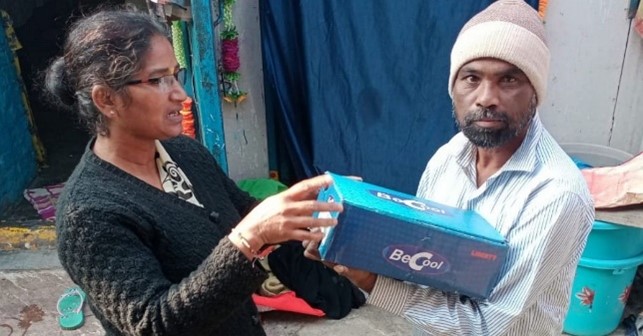
About the Initiative
- Having been brought up by parents afflicted with leprosy, Jaya has an innate ability to understand and empathise with their plight.
- Jaya’s father worked tirelessly for the community, until his death. She continued his work forward in Delhi’s Anand Parbat area that houses close to 30 people affected by leprosy.
- As a child she was shunned in school, as her parents were suffering from the disease.
- She stays in the same colony as the patients and has been their messiah in terms of fighting for their right, providing food, and working for their documentation works.
- Her day begins early and I do everything from helping in basic first aid for the patients to getting their paperwork for pension or even getting their voter ids, etc. made.
- She worked as a care-giver in pre-Covid 19 times. Despite being unemployed now, she works for the betterment of these patients.
Quote: The biggest disease today is not leprosy or tuberculosis, but rather the feeling of being unwanted- Mother Teresa
Source:
Share the article
Get Latest Updates on Offers, Event dates, and free Mentorship sessions.

Get in touch with our Expert Academic Counsellors 👋
FAQs
UPSC Daily Current Affairs focuses on learning current events on a daily basis. An aspirant needs to study regular and updated information about current events, news, and relevant topics that are important for UPSC aspirants. It covers national and international affairs, government policies, socio-economic issues, science and technology advancements, and more.
UPSC Daily Current Affairs provides aspirants with a concise and comprehensive overview of the latest happenings and developments across various fields. It helps aspirants stay updated with current affairs and provides them with valuable insights and analysis, which are essential for answering questions in the UPSC examinations. It enhances their knowledge, analytical skills, and ability to connect current affairs with the UPSC syllabus.
UPSC Daily Current Affairs covers a wide range of topics, including politics, economics, science and technology, environment, social issues, governance, international relations, and more. It offers news summaries, in-depth analyses, editorials, opinion pieces, and relevant study materials. It also provides practice questions and quizzes to help aspirants test their understanding of current affairs.
Edukemy's UPSC Daily Current Affairs can be accessed through:
- UPSC Daily Current Affairs can be accessed through Current Affairs tab at the top of the Main Page of Edukemy.
- Edukemy Mobile app: The Daily Current Affairs can also be access through Edukemy Mobile App.
- Social media: Follow Edukemy’s official social media accounts or pages that provide UPSC Daily Current Affairs updates, including Facebook, Twitter, or Telegram channels.

